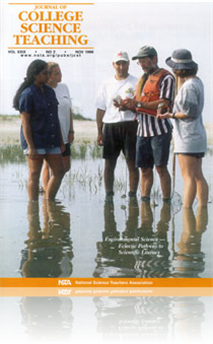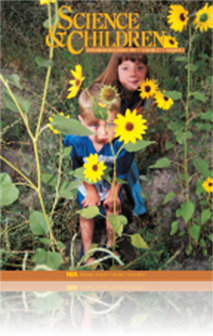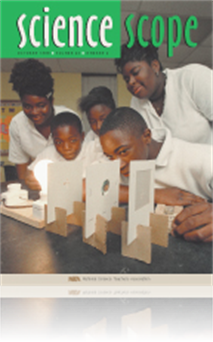All Resources
Journal Article
This column shares reflections or thoughtful opinions on issues of broad interest to the community. In this month’s issue, the author discusses the question of proper usage of the scientific vocabulary—it’s not new and continues to be argued....
Journal Article
Journal Articles as Case Studies: The New England Journal of Medicine on Lactose Intolerance
Students use as the basis for a case study a journal article investigating whether people who claimed to have severe lactose intolerance really were unable to digest lactose. This type of case is referred to as an “issues” or “analysis” type ...
Journal Article
Editorial: Headwinds Over Kansas—Making Good on Our Commitment to Science Education
The Journal of College Science Teaching’s editor shares thoughts regarding the current issue....
Journal Article
This column provides original articles on innovations in case study teaching, assessment of the method, as well as case studies with teaching notes. In this month’s issue, the case study was inspired by a novel assignment that Pace University Profe...
Journal Article
Research and Teaching: Contemporary Student Attitudes About Mathematics, Science, and Technology
To more effectively educate their students at Drury College in Springfield, Missouri, the authors developed a new, integrated science and mathematics curriculum (Deeds 1999) that emphasizes the nature of science and how we acquire scientific knowledg...
Journal Article
The Case Study: Avogadro Goes to Court
The case study that follows was inspired by a novel assignment that Pace University Professor Carroll Zahn gave to his introductory computer class. The result of this assignment was certainly far different than anything that either the professor or h...
Journal Article
A Workshop Approach: Using learning centers to teach early childhood science
The science workshop approach is a method of organizing learning centers in developmentally based primary programs. The approach centers on providing a series of meaningful experiences around core science concepts. These experiences are presented in ...
Journal Article
Scope on the Skies: Biggest and brightest
This column focuses on astronomy throughout the year. In this month’s issue, learn about the two brightest planets—Venus and Jupiter....
Journal Article
Any teacher who has had the pleasure of giving students their first view of an image made by a handheld lens will agree that optics is addictive. Seeing how a magnifying glass works, building a telescope, and discovering that a partial lens produces ...
Journal Article
By using the writing process to explore science, students and teachers can find new ways of clarifying, revising, and consolidating knowledge. To achieve this goal, try using The Writing in Science Wheel activity described in this article. The Writin...
Journal Article
The Nature of Haiku: Students use haiku to learn about the natural world
Haiku takes advantage of children’s curiosity and interest in nature. The open-ended nature of haiku writing is motivational and student centered. Also, the simplicity of haiku allows children to have successful writing experiences. This article de...
Journal Article
A parachute drop is a fun way to engage students in science while sneaking in a lesson on average velocity, wind resistance, and gravity. The following hands-on activities ask students to first build and then test parachuting paraboloids (the larger ...
Journal Article
Playful Activities for Young Children: Assessment tasks with low reading and writing demands
Alternative assessments in science instruction have been developed for the upper elementary grades but are limited in the area of early childhood instruction. Because younger children have limited abilities in reading and writing, teachers have diffi...
Journal Article
After the Bell: Modeling museum collaboration
Entering a partnership with a local museum is a great way to gain access to materials, facilities, and science expertise that might be unavailable at the school. This article contains a description of a museum/school collaboration that can serve as a...
Journal Article
Tech Trek: Science on the fringes
Conducting investigations over extended periods of time that use process skills in context is important but it's hard to find the time for such an investigation. This article proposes a solution—“science on the fringes”—ongoing low-maintenanc...
Journal Article
Teaching Teachers: Taking the Good from the Bad
Creating an environment where preservice teachers can reach an understanding about the merits and problems of science activities was the rationale for development of a favorite assignment—The Worst Activity. This assignment helps develop critical t...
Journal Article
Object boxes—plastic shoe boxes containing carefully selected figures, toys, and household items—can provide a hands-on opportunity for students to explore both abstract concepts, such as scale, and more concrete topics, such as bird body adaptat...
Journal Article
Editor's Note: Is There Nothing New . . .
Science and Children’s editor shares thoughts regarding the current issue....
Journal Article
Have you ever noticed that the water level in a measuring cup is higher at the sides than at the center? Can you explain how it is possible for water striders to walk on water? What are the physical properties of water that make these phenomena possi...
Journal Article
Playing with toys isn’t always child’s play. Designing activities that use toys to improve student’s observation skills and problem-solving techniques can lead to serious science. To that end, the authors developed the following weeklong activi...
Journal Article
Girls Only, Please: An after-school science club for girls promotes understanding and involvement
Many girls come to school with few out-of-school experiences that properly prepare them for science in the classroom; however, boys often play with science toys and tinker with mechanical devices. Furthermore, when compared to boys, girls might not r...
Journal Article
Many people assume that if an activity is published or popular, it is a good one. This is often the case when teachers select science activities because they are fun or address a particular science topic, not because they provide a quality learning e...
Journal Article
Dig Into Mining Reclamation during Earth Science Week
Mining reclamation is defined as the process of returning mined land to productive and beneficial use. How this is accomplished depends on the type of mine, its location, and the degree to which the land was disrupted during mining operations. This i...






